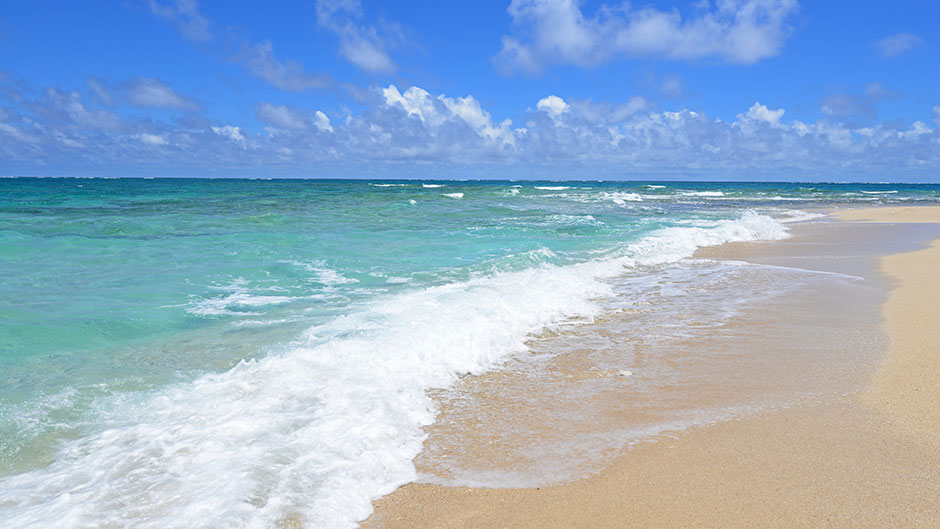Beach sand contains all kinds of microorganisms, including those that can harm human health. Yet current guidelines are focused exclusively on monitoring the levels of microbes in the water.
Now, an international panel of scientists is recommending monitoring the sand at recreational beaches, to minimize health risks for beachgoers. Their advice is based on the general consensus reached during the international conference “Trends in Environmental Microbiology and Public Health,” held in Lisbon Portugal in September 2014.
“Beach sands accumulate contaminants and people can get exposed to these contaminants during beach recreational activities,” said Helena Solo-Gabriele, professor at the University of Miami College of Engineering, corresponding and first author of a paper that summarizes the findings.
“Hopefully this paper will make a difference in convincing regulators of the need to include sand in beach monitoring programs,” she said.
The article, published in the July issue of the Journal of the Marine Biological Association of the United Kingdom, reflects the international experience of all scientific and technical papers published up to date, including data from beaches in the U.K., Portugal and the U.S.
“This publication is a landmark paper,” said João Brandão, manager of the sand microbiology and public health programme at the National Institute of Health in Portugal, national delegate for the European Confederation of Medical Mycology and co-author of the paper. “It wraps it all up and hopefully lays down the foundation for the future.”
Many of the studies used to develop recommendations were conducted in South Florida including Hobie Beach, along the Rickenbacker Causeway, as you enter Key Biscayne. Other beach locations in the U.S. included the Great Lakes, Hawaii and California.
Previous studies have shown that the swash zone of the beach environment, with the wetting and drying processes and the presence of seaweed, algae and sargassum, is prone to regrowth of disease-causing microbes, including unhealthful bacteria, viruses, nematode larva and eggs and harmful yeast and fungi.
The scientists explain that since 2003, there is a World Health Organization recommendation to perform epidemiological studies of the impact of sand quality on bathers' health and to set surveillance strategies. Yet, so far, "unfortunately no country has implemented this recommendation."
Specific recommendations of the current paper include:
- Identification of the disease causing agent(s). With this understanding, effective control and monitoring programs can be implemented
- Methods that estimate public health risks from various pathogens in the sand
- Studies that can assess exposure to microbes in the sand by contact, ingestion and inhalation
- Indicators, other than FIOs (fecal indicator organisms), to determine the presence of sewage and human waste
- Detection and quantification of microbe levels for specific pathogens
- Determine if FIOs are indicative of fecal pollution that carries pathogens, or separated from their original source through survival and regrowth.
- Tools to identify sources of pathogens
- Regulatory standards that reflect microbial sources, the pathogens they contain and the associated health risks.
- Reliable sand collection methods that take in consideration that pathogen contamination at sandy beaches tends to be patchy.
- Determination of beach sand quality at freshwater vs. marine beaches
- Assess beach sand quality based on contamination by land-and-air
- Standardized methods to recover and disinfect FIOs and pathogens from different types of sands.
The article is titled, “Beach sand and the potential for infectious disease transmission: observations and recommendations.”
It was produced by an interdisciplinary team of scientists from 19 universities and research institutions, including The University of Miami, National Institute of Health in Portugal, University of South Florida, Aberystwyth University in the UK, University of Hawaii, University of Minnesota, National Oceanographic Centre in the UK, Oporto University, University of Lisbon, Canada Center for Inland Waters Environment, University of Ljubljana in Slovenia, Canisius-Wilhelmina Hospital in the Netherlands, University of Wisconsin, University of Madeira, University of Azores, CBS-KNAW Fungal Biodiversity Centre in the Netherlands, Tel-Aviv University, University of Brighton, and the Polytechnic Institute of Lisbon.

